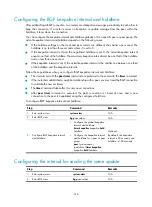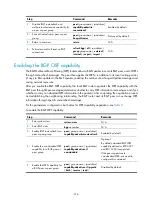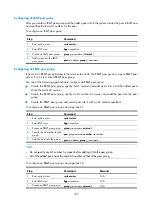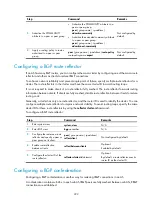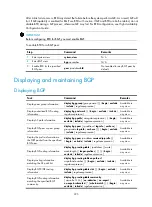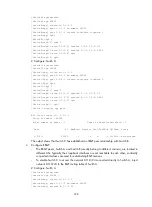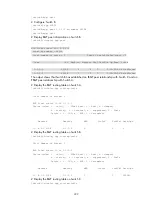
221
Step Command
Remarks
4.
Specify an AS number for a
peer.
peer
ip-address
as-number
as-number
N/A
5.
Add the peer into the group.
peer
ip-address
group
group-name
[
as-number
as-number
]
The AS number can be either
specified or not specified in the
command. If specified, the AS
number must be the same as that
specified for the peer with the
peer
ip-address
as-number
as-number
command.
NOTE:
Peers added in the group can have different AS numbers.
To configure an EBGP peer group using Approach 3:
Step Command
Remarks
1.
Enter system view.
system-view
N/A
2.
Enter BGP view.
bgp
as-number
N/A
3.
Create an EBGP peer group.
group
group-name
external
N/A
4.
Add a peer into the group
and specify its AS number.
peer
ip-address
group
group-name
as-number
as-number
N/A
NOTE:
•
Do not specify any AS number for a peer before adding it into the peer group.
•
Peers added in the group can have different AS numbers.
Configuring BGP community
A BGP community is a group of destinations with the same characteristics. It has no geographical
boundaries and is independent of ASs.
You can configure a routing policy to define which destinations belong to a BGP community and then
advertise the COMMUNITY attribute to a peer or peer group.
You can apply a routing policy to filter routes advertised to or received from a peer or peer group
according to the COMMUNITY attribute, which helps simplify policy configuration and management.
For how to configure a routing policy, see "
."
To configure BGP community:
Step Command Remarks
1.
Enter system view.
system-view
N/A
2.
Enter BGP view.
bgp
as-number
N/A








